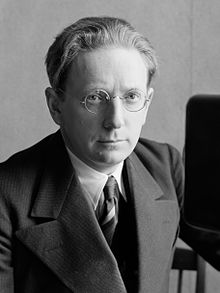21 August 2015
BBC Symphony Orcheatra, Sakari Oramo,
Stephen Farr, Organ
The programme began with the symphonic poem, Tapiola, Sibelius’ last major work. Tapiola is the Finnish god of the forests and this work has a cinematic quality as it evokes mystery, timelessness and grandeur. The score is dominated by the large string section which moves between sustained and understated line to powerful tremolando. This was a magical start to the evening, amply demonstrating the tightness and control of conductor and orchestra.
Jon Leifs’ music has only recently become more widely known. He is often described as a maverick and the work performed here certainly shows an individuality that is characteristic of his music. Organ Concerto, Op 7 was completed in 1930 but began life in 1917. This three movement work draws on vast orchestral forces including a large percussion section. As the programme note points out, “The work starts as it means to go on, with an ear-splittingly dissonant chord on the full organ, reinforced later by the orchestra”. The middle movement Passacaglia begins in conventional fashion as it slowly builds in texture and volume but as it develops there are passages influenced by jazz and military bands. The Finale teases as successive false endings build in intensity to its climax. Throughout the work there is much dialogue between the organ and various sections of the orchestra and there was a sense of dedication and purpose in the performance despite the wonderful madness of it all! Stephen Farr’s performance at the organ was impressive and greatly appreciated by the audience. This was rewarded by a gentle solo encore.
Further contemporary sounds were experienced in the UK premiere of Anders Hillborg’s Beast Sampler, given in the presence of the composer. Like Tapiola this piece is an evocation of aspects of the natural world. As well as using ‘almost pitchless’ wind sounds, ‘seagull glissandos’ and other effects the piece covers a huge dynamic range, often moving rapidly from pppp to ffff. This was another tightly controlled performance, displaying great musical skill as well as Sakari Oramo’s conviction in leading the ensemble.
The final work was the most traditional of all, Beethoven’s Symphony No 7 in A major. Throughout this piece there was a lightness and sense of movement that allowed the music to sing and have life without feeling overplayed. The second movement Allegretto was allowed to breathe and danced along without feeling forced and the Presto sections of the third movement had a real sense of fun and vitality. Great use of dynamics was made throughout, my only criticism being (as in earlier pieces) that the extremely soft passages were almost inaudible and I wonder how that would be experienced by those listening on the radio.
This was an exciting and at times challenging programme. I personally would have preferred to have ended the evening with the climactic Organ Symphony. Perhaps there was a feeling that the evening needed to end in safer and more familiar territory.
Stephen Page

